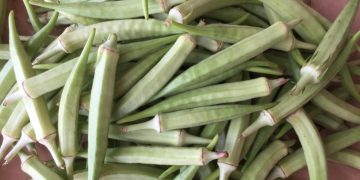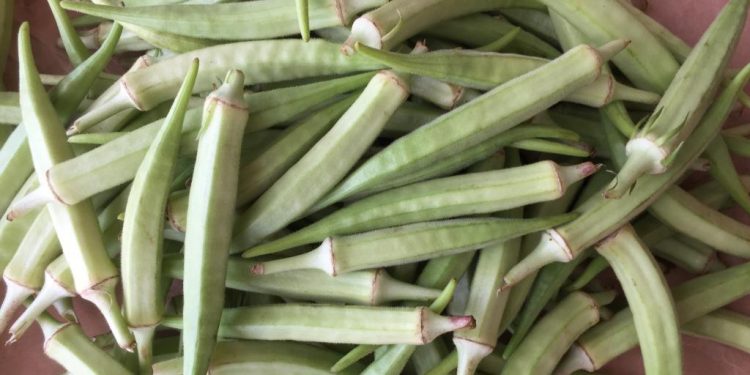Okra (Abelmoschus esculentus (L.) Moecnh) is a versatile crop that is widely grown in western Ethiopia. Okra grows preferably in well-drained, humus-rich fertile soil with a pH ranging from 6 to 6.7 , grows in poor soil with intermittent moisture , adapts to a wide range of climatic conditions , and grows best in hot weather (temperatures above 26°C) . It is an economically important vegetable crop , is widely cultivated throughout the year in the tropics , and is grown as a garden crop or on large commercial farms .
Okra is a versatile vegetable that can be used to prepare a variety of dishes. In addition to food, the pod is used for making luxury drinks, such as soup, coffee, juice, and others, based on the communities’ desires and experiences. The pod is the most useful part of the crop, serving several functions.
Stew preparation “draw” is the most popular mode of preparation of okra, where all parts are processed either in fresh or dry powdered forms. To prepare stew, fresh leaves, flowers, bark, and pods are harvested, well-washed, and ground to make dry powders. It is then mixed with additional ingredients such as boiled split beam, red pea, green pea, black pea, split pea, soybean, mung bean, split mung, and water before being heated until well-cooked and spiced/seasoned. Sew is typically served with local stable bread, such as injera, aljizira, alguraza, or porridge. The mucus-like liquid is used to thicken strews, which are popular among the local community, as also reported previously.
The popular “draw” (sticky) soup, also known as “kenketse soup,” is often cooked with either red meat or alone . To make soup, immature fresh “kenketse bertha” is picked, washed, chopped, or sliced into tiny sizes, then combined with additional ingredients, such as ground red meat, sliced carrot, sliced onion, oil, dried fish, and water. It is then boiled for half an hour to preserve the volatile nutrients. The soup is utilized as a fast-track to meet the immediate requirement for food by locals who have been hungry for several hours.
The pods are chopped and boiled with pepper to make okra salad, which is served with local foods such as injera, aljizra, and alguraza, which are made of powdered corn, sorghum, teff, or rice. This demonstrates that the pod can be consumed as a vegetable, either raw or cooked. The local communities also utilize okra seeds as a coffee replacement when there is a coffee scarcity or lack of access to coffee .
Most households utilized the entire plant to heal or treat a variety of diseases, including back pain, heart discomfort, constipation, gastric infection, malaria, diarrhea, amoeba, and many sorts of wounds.
Photo: EPPO (2024) EPPO Global Database. https://gd.eppo.int
Reference: Mohammed, H. Y., Teferra, T. F., & Sime, G. (2024). Indigenous knowledge and nutritional and morphological characterization of okra (Abelmoschus esculentus (L.) Moecnh) varieties in Western Ethiopia. Food Science & Nutrition, 12, 2537–2550. https://doi.org/10.1002/fsn3.3936
































